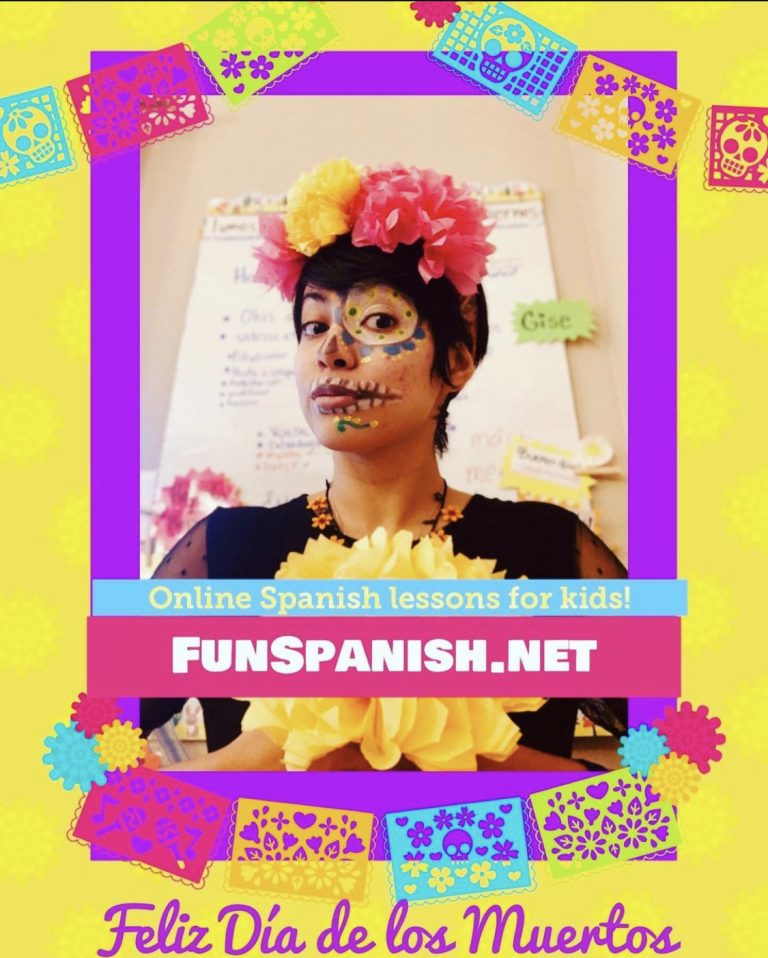Spanish Classes for Kids: An Unexpected Source of Fun
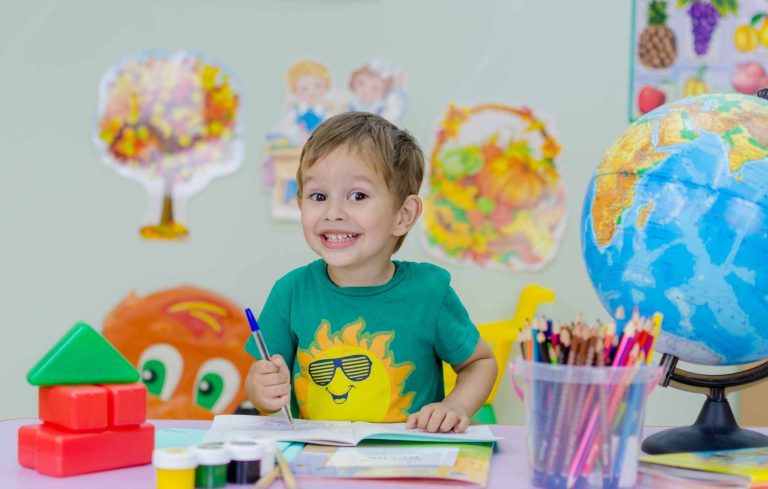
Kids (and most adults) learn best when learning is attached to fun! Rote repeating words and memorizing grammar concepts does not help adults grasp a language, let alone children. Vocab lists are way more likely to make kids stare out the window than get them excited about Spanish.
Children have such brilliant, active minds. The best way to engage their mental powers is to keep them engaged and entertained.
With my Spanish classes for kids ages five to six years old, your child will learn a new language while engaging in fun activities. So many of my students don’t even realize that they’re in class—they think we’re having playtime via video call!
Edutainment: Proving That Learning Can Be Fun
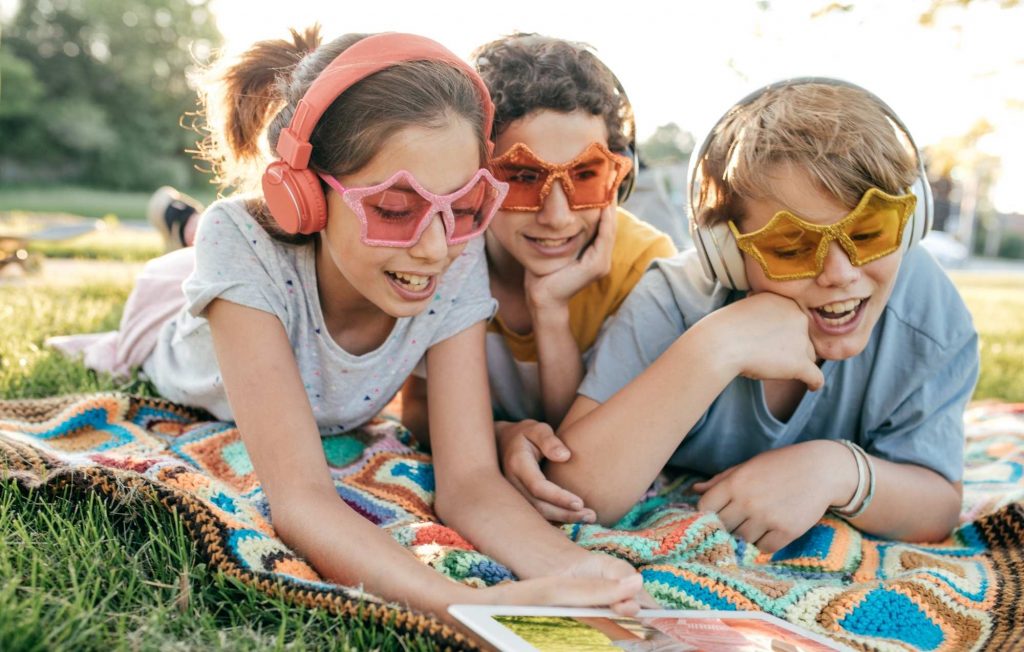
Edutainment is a term that describes the intersection between entertainment and education. Some people credit Walt Disney with inventing the term in 1954. If edutainment was good enough for Walt Disney, then it’s good enough for my lessons.
Edutainment usually describes videos, TV programs, and other media that is educational for children while providing them with entertainment. If you’ve ever seen Sesame Street, then you know what edutainment is. I use fun videos, games, and songs in my classes to bring Spanish to life following these principles.
Through a multimedia approach and engaging activities, children learn basic Spanish without even realizing that they are studying.
Move, Move, Move!
All parents know that young children have almost endless reserves of energy (particularly when they want to wake you up at 6 a.m. on the weekend). Regular school doesn’t give kids many opportunities to release this energy. I’m not going to be just another person on a screen asking kids to sit still, so my lessons use movement to help them learn Spanish.
Besides keeping kids entertained, movement also improves memory and recall—even for adults. One teaching tool that I use is matching certain vocabulary words with a movement, for example, waving hello when saying “Hola.” The movement helps kids learn better and makes memorizing new words fun.
I also get moving with kids by playing fun playground games to help them learn Spanish. For example, we can play “Simon Says” but replace the names of the body parts with the words in Spanish instead of English. The games help kids learn new words in context—without even realizing that they’re learning.
That does not mean that all of our lessons involve running around and jumping. With a balance of movement and quiet activities, my lessons avoid overstimulating extroverted students and meet shyer kids at a place that’s comfortable. Through movement and other techniques, the lessons are accessible to children of all learning styles.
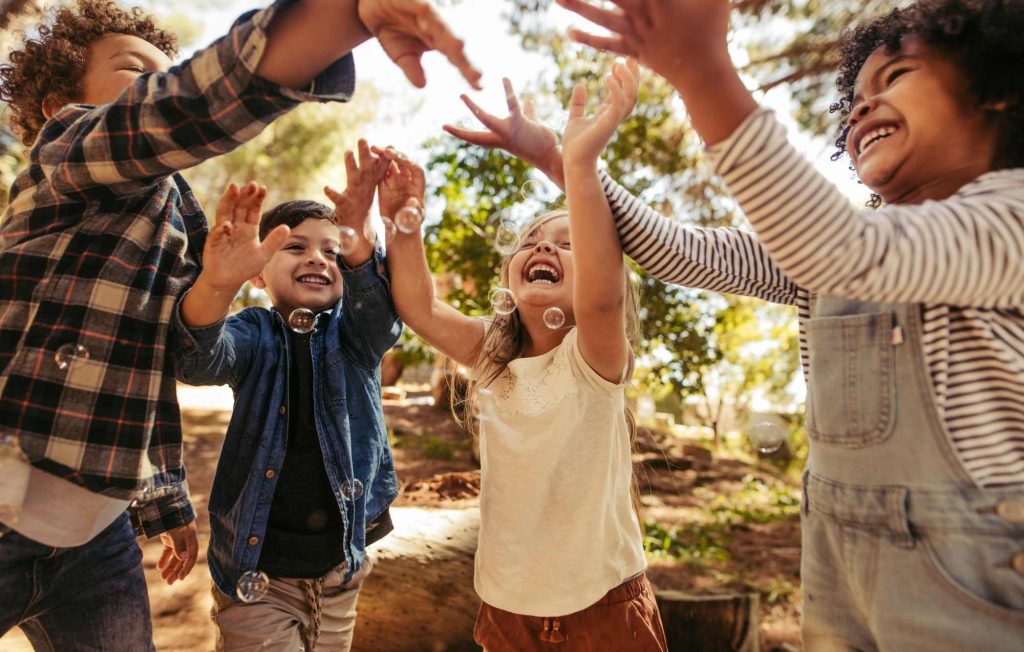
Learning Through Song

Spanish classes for kids sometimes sounds like karaoke because we listen to so many songs! Everybody loves music, especially kids. Parents love songs too because kids learn through them in so many ways. For example, they can sing along and practice repeating the words that we learn. Singing is a more entertaining way to memorize something than repeating vocabulary lists.
Songs are also easier to remember. The repeated melodies of the song stick into kids’ brains more than a dry vocabulary list, making it easier to remember new words. Songs show kids how to use new words and concepts in context, making them more likely to use them.
But kids don’t think about how much they’re learning while listening to music. They just think that songs are fun. Playing a song is a great way to learn some Spanish while still letting active kids get some of their wiggles out by dancing to the music. Kids love starting lessons with songs, taking a break for sing-along time in the middle of the lesson, or ending with some music as a treat.
Many of my students enjoy listening to the songs we learn even outside of class. Your child may not enjoy reviewing vocabulary lists or doing homework, but they will want to sing the new Spanish language song we learned together in class. Sign up for Spanish for kids and your house could also be full of wonderful Spanish tunes.
Personalizing Lessons
My individual lessons make it easier to personalize lessons toward your child’s interests. When children see how a new skill or language is relevant to their interests, they are more likely to be interested and to remember what they learned
Almost every aspect of my Spanish lessons are easily personalized. For example, kids can practice saying hello to puppets of their favorite movie characters and learn counting by counting their favorite animals. Instead of making your child adjust to lessons, we adjust the lessons to your child. That makes learning more fun and so much more effective.
Traditional classes try to force your child to fit into a mold. My classes show each child how Spanish fits into their world.
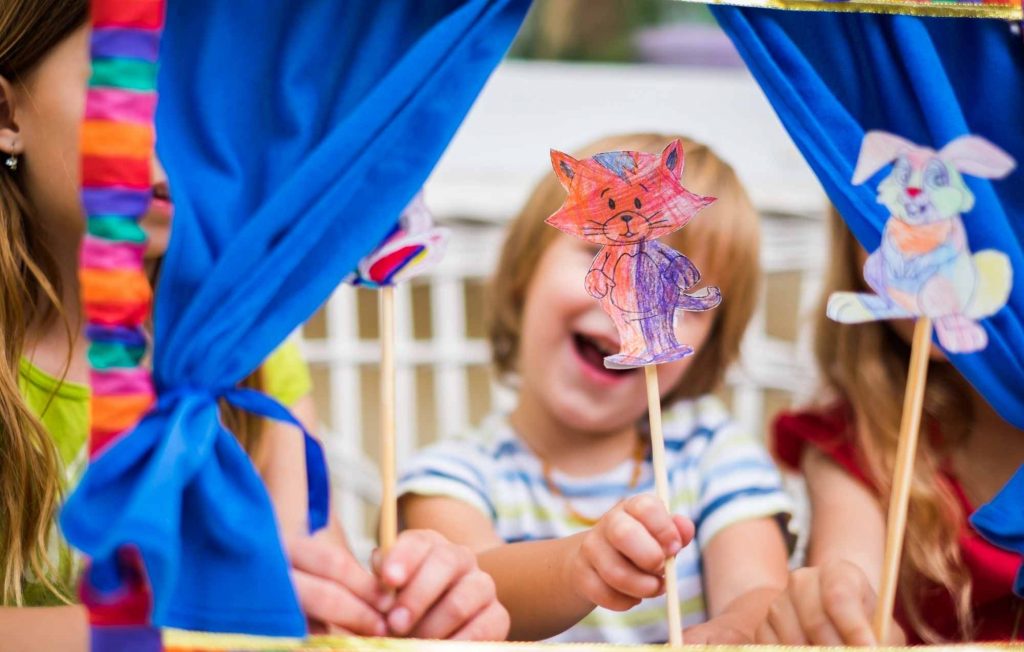
Using Technology to Learn
The new generation are digital natives, learning to interact with the world through a keyboard and a screen. My effective Spanish classes meet kids where they are, on their native territory, with many digital components.
Our classes are already technology-based since I teach via video call. Instead of just using the computer to reproduce a traditional lecture, I like to include other fun apps and online tools to learn Spanish. If we already have technology at our fingertips, why not use it?
Thanks to different apps and websites, kids can listen to audio, play interactive games, and follow engaging stories and videos in Spanish, all from one screen.
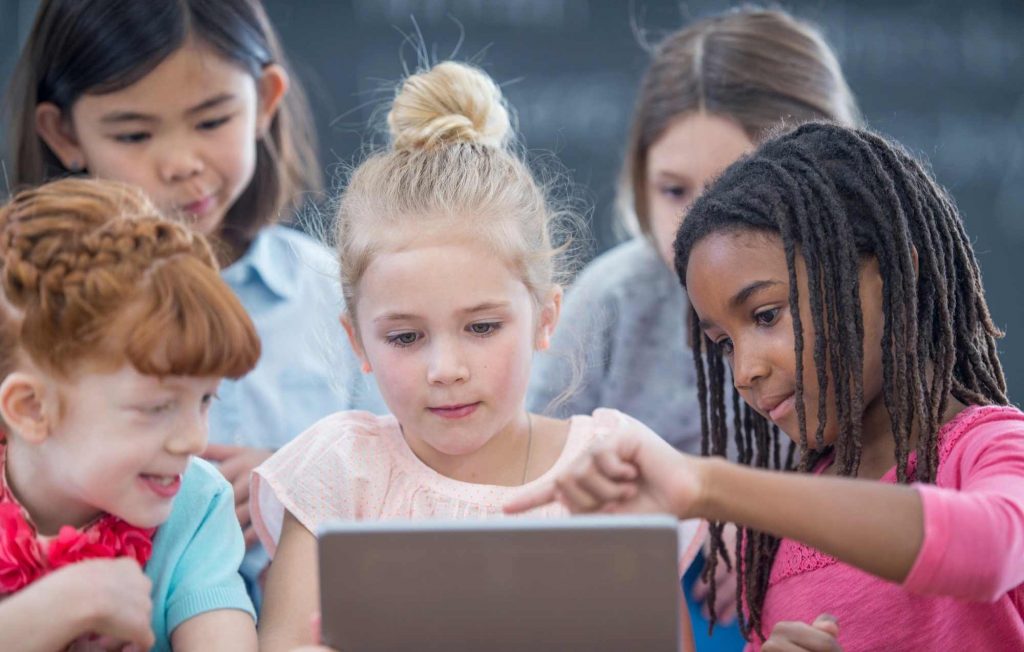
Visuals Are Key
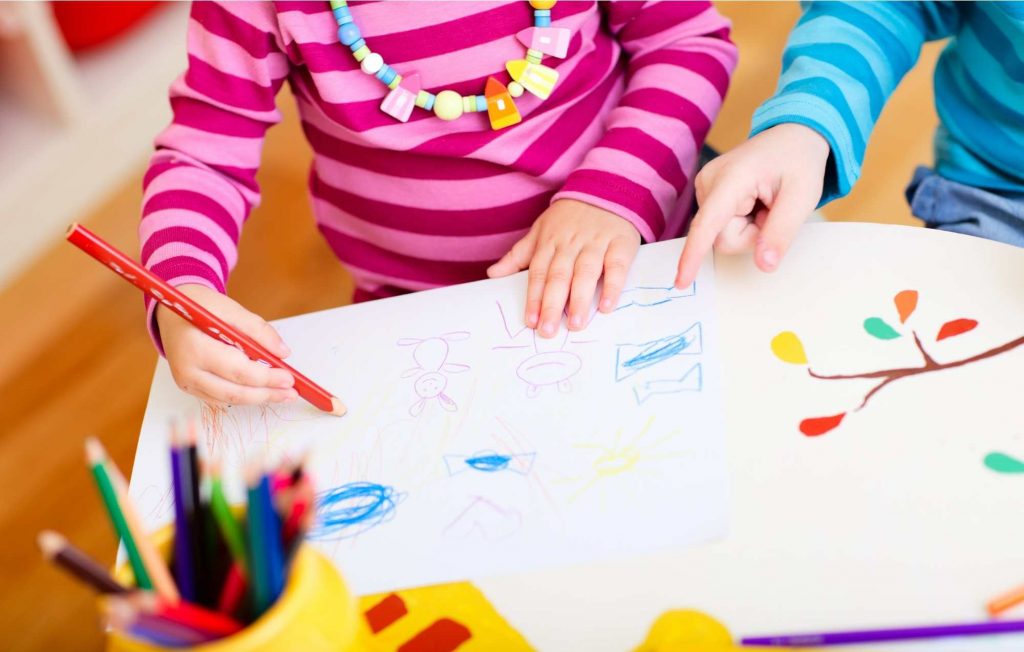
Learning Language Through Storytelling
Kids love stories in all formats—whether they are listening to a story being read aloud, watching a movie, or acting a story out. Storytelling helps make a language come alive for kids. Instead of focusing on the language, they are totally immersed in what happens next.
In my classes, kids also create their own stories by engaging in interactive games. Building their own worlds using Spanish and new concepts that they learned improves language retention and makes classes more fun.
My lessons use bright visuals to entertain kids and help them learn. When I pop up on your child’s screen, I don’t want them to just look at a disembodied head against a white background. I use visuals to make my background fun. We can even practice Spanish together when kids ask me about the visuals on my screen.
By putting up bright posters, image cards, pictures, and more, the classroom, even if it is just a virtual classroom background, is a more welcoming place for kids.
Using images during learning is also how we reinforce important concepts. Associating a word with an image instead of a direct translation improves recall and usage. Plus, looking at pictures of food vocabulary or other vocabulary lists is more fun for kids than just memorizing lists of words.
In my lessons, kids even make their own visuals by making crafts and coloring. The soothing act of making art helps them connect to the Spanish language. The benefit for parents is that you get new art to hang up on the fridge!
Cultural Immersion
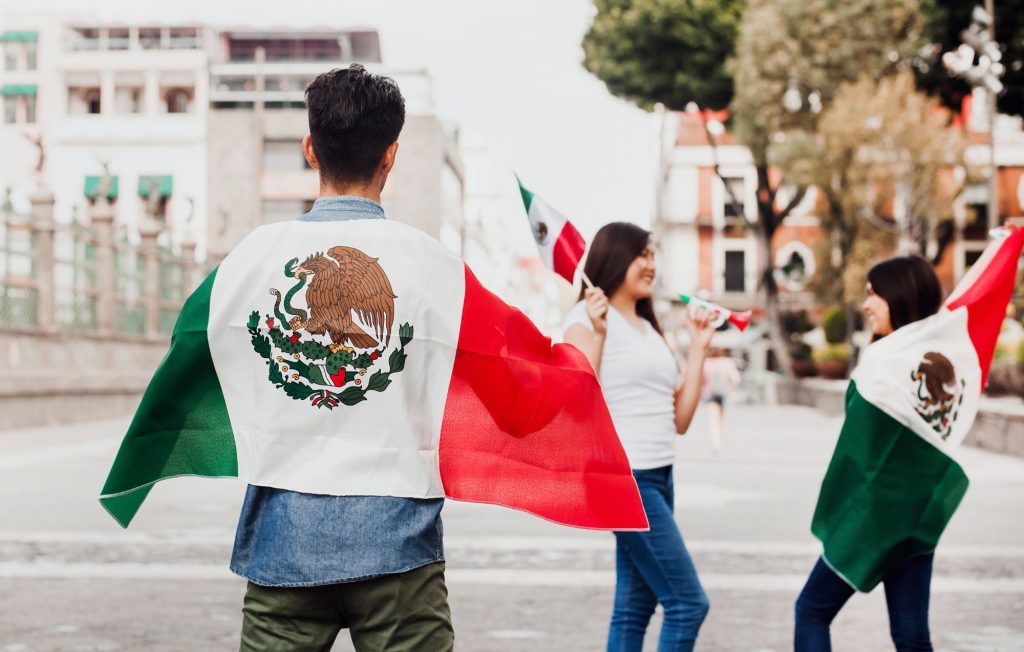
Language is so much more than words on a page—it is a window into a whole new culture. Kids are naturally curious about new things and satisfying that curiosity with activities that immerse them into the culture of Spanish-speaking classes is entertaining and educational.
With me, students learn about holidays, food, traditions, and more from Spanish-speaking countries. We do special activities and crafts for Día de los Muertos and other popular holidays.
With the growing popularity of movies such as Coco and Encanto, more and more kids are curious about the culture of Spanish-speaking countries, even ones that may not have been exposed to those in the past. Activities that engage that curiosity help keep my students engaged.
Opening up a Whole New World of Media
Kids love learning when they know that they will get some benefit from that activity. In my classes, I introduce kids to a whole new world of Spanish-language children’s media, including songs, cartoons, and movies.
Even outside of class, my students listen to, read, and watch Spanish media not because they want to practice, but because it is fun. That is the goal of my classes. I want students to learn Spanish not just because they want to do well in class, but because it is a skill that they can take with them in other aspects of their lives now and in the future.
If you want to build a good foundation for your child’s future, sign up for Spanish lessons today!

Making Spanish Class Fun
One of the most important things when teaching Spanish classes for kids, particularly those aged five to six, is to make classes engaging. Through a variety of methods, from movement to visuals to media and technology, my classes are entertaining for kids.
Entertaining Spanish classes are not just designed that way to make kids behave. Through entertaining activities that engage kids in activity, their grasp of the language will also be better. For a fun activity that will reap dividends in the future, why not sign your kids up for Spanish?
